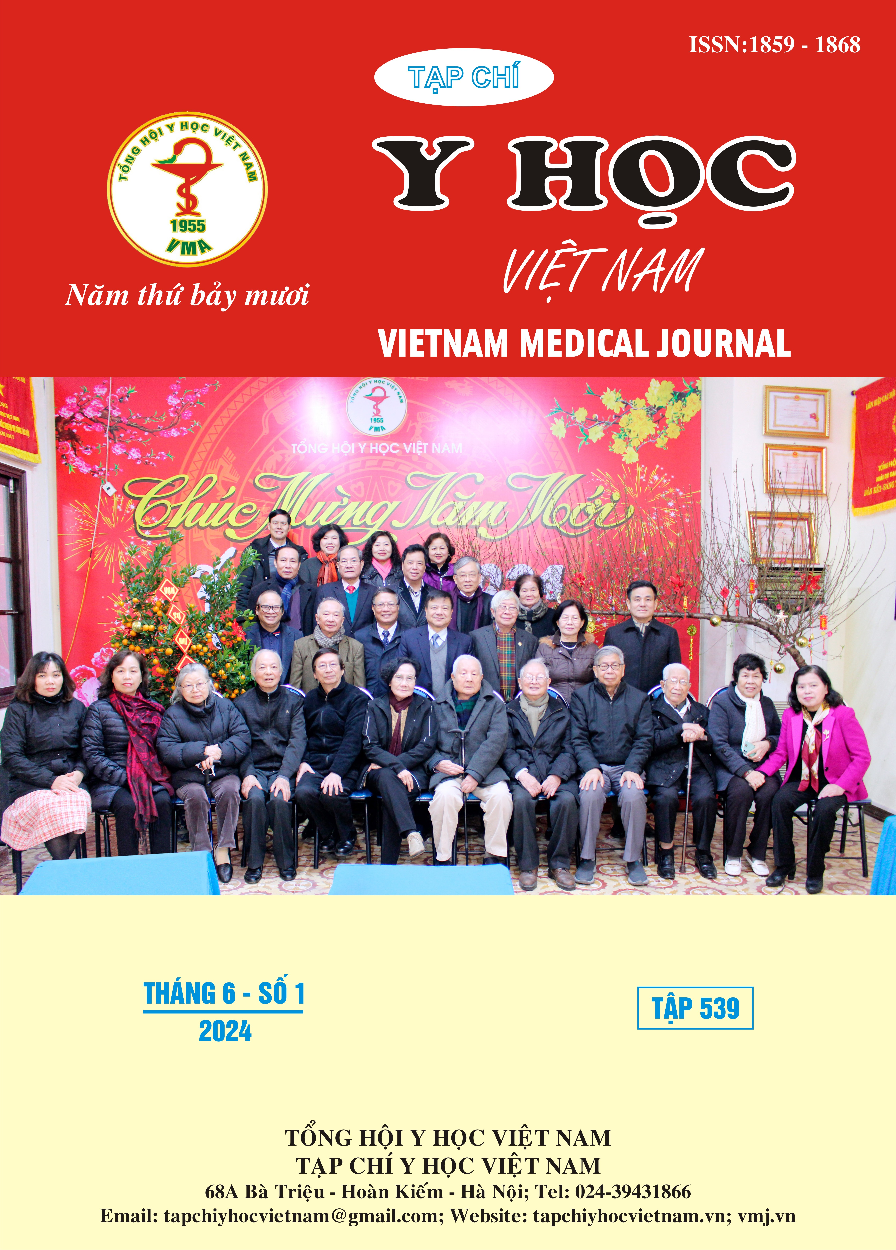OBESITY AND TOTAL BODY FAT INCREASES BY AGE – RESULTS FROM A RESEARCH ON ADULT MALES IN THREE PROVINCES IN VIETNAM
Main Article Content
Abstract
Objectives: To determine the prevalence of overweight and obesity and the assocaitions of A Body Shape Index (ABSI), Body Roundness Index (BRI), estimated Total Body Fat (eTBF) with demographic factors among males aged >18 years in some provices. Methods: A cross-sectional study was conduted on 454 maled aged >18 years from 2020 to 2021 in Ninh Thuan, Can Tho and Ha Giang province to collect sociodemographic and anthropometric data such as weight, height waist circumference (WC) to calculate BMI, ABSI, BRI and eTBF. Results: The prevalence of overweight and obesity was 36.6% and 3.7%, respectively. eTFB and ABSI has a positively statistically significant association with age (p<0.05). Conclusion: ABSI and eTFB have positive assocaitions with age of the participants. The roundness and total body fat percentage increases by age in the adult males.
Article Details
Keywords
anthropometry, sociodemographic factors, BMI, body shape, body size
References
2. WHO. (2021). Body mass index - BMI. Available from: https://www.euro.who.int/en/health-topics/ disease-prevention/nutrition/a-healthy-lifestyle/body-mass-index-bmi.
3. Krakauer, N.Y. and J.C. Krakauer. (2012). A New Body Shape Index Predicts Mortality Hazard Independently of Body Mass Index. PLOS ONE. 7(7): p. e39504.
4. Thomas, D.M., et al. (2013). Relationships between body roundness with body fat and visceral adipose tissue emerging from a new geometrical model. Obesity. 21(11): p. 2264-2271.
5. Ofstad, A.P., et al. (2019). Comparison of the associations between non-traditional and traditional indices of adiposity and cardiovascular mortality: an observational study of one million person-years of follow-up. International Journal of Obesity. 43(5): p. 1082-1092.
6. National Center for Health Statistics. (2004). NHANES: Anthropometry procedures manual. Revised.
7. Swinburn, B.A., et al. (2011). The global obesity pandemic: shaped by global drivers and local environments. The lancet. 378(9793): p. 804-814.


